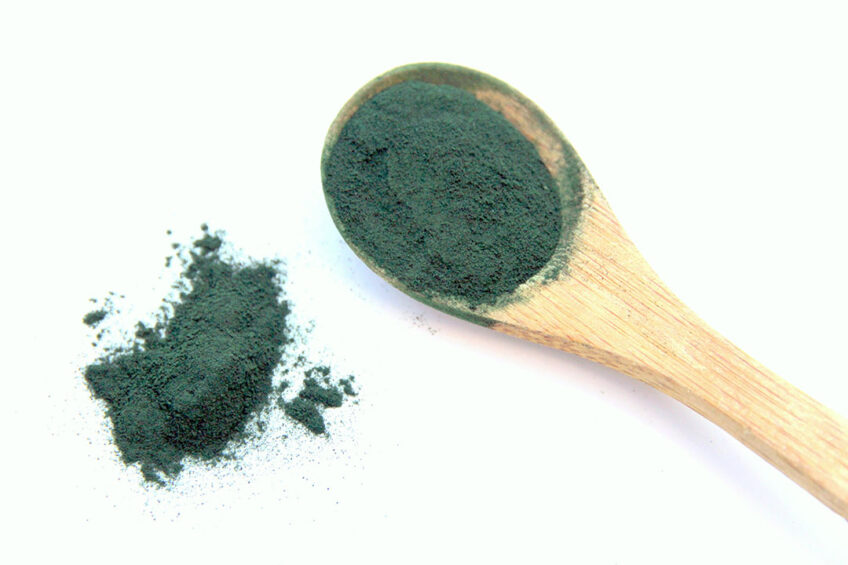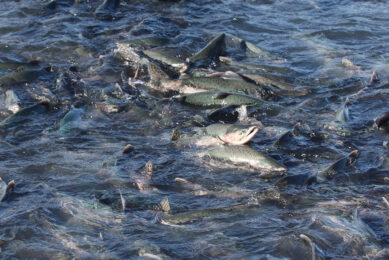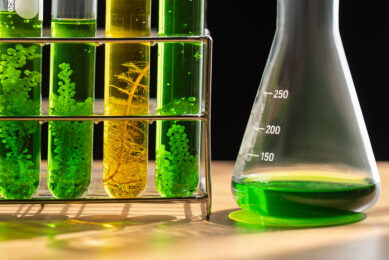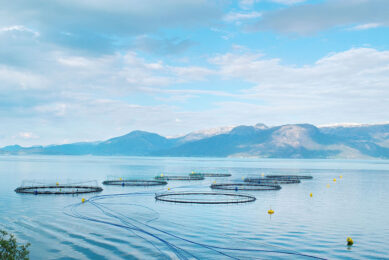The potential of microalgae as fish feed

There is an growing interest in finding alternatives to fish meal and fish oil in compound feeds. Microalgae could be such an alternative.
Microalgae are increasingly being studied as an alternative to fishmeal in aquafeed production. Their net biomass productivity is higher than that of any other terrestrial plant or animal. Unlike land-based plants, there is no need for microalgae to grow in fertile land. Further, microalgae can be cultivated using seawater or wastewater. The nutrient requirement to grow microalgae is relatively simple as opposed to insects and bacteria. Microalgae have the right blend of protein, lipids, and carbohydrates needed to protect fish health.
Benefits
Studies have evaluated the use of microalgae as feed for various fish species. It has a number of benefits such as promoting the growth of tilapia and carp, improving the reproductive performance of yellow tail cichlid, and enhancing the immune response of rainbow trout.
In one study, 31% higher weight gain was achieved in Atlantic salmon when fed a diet containing 5% of the microalga schizochytrium than with a diet without it. Similarly, 30% higher weight gain in Pacific white shrimp was achieved with a diet containing 0.75% tetraselmis suecica compared to a diet lacking it.
With microalgae-based diets 69%, 58%, and 46% higher weight gains were achieved in Nile tilapia when fed a diet containing 15% chlorella, 14% nannochloropis oculata and schizochytrium, and 10% N. oculata, respectively compared to fish with the control diet. Although various factors could have contributed to wide differences in the weight gain values in different species, the positive effect of microalgae’s low and moderate inclusion in the diet is evident.
Microalgae are a rich source of protein and lipids when compared to other alternative ingredients such as yeast and bacteria (see Table 1).
Spirulina
A favourite microalga is spirulina – a filamentous blue-green microalga, which is an excellent source of plant protein that could replace expensive animal-derived proteins in fish feed. So small, less than a millimeter, that it can only be seen through the microscope, spirulina was so named because of its spiral shape. Discovered by the Aztecs, who nourished themselves with its beneficial properties, it has evolved over the centuries and is now increasingly widespread. Spirulina algae is a primordial micro alga, a natural product, and today it is considered to be a “super food” with high protein content (about 60%).
No chemical processing needed
It lacks cellulose cell walls and therefore does not require chemical processing in order to become digestible. (The digestibility is 83 – 84 %.) Spirulina is a source of natural carotenoids, containing β-carotene and xanthophylls (zeaxanthin, echinenone and cryptoxanthin). These carotenoids are integrated into the fish muscle without further modification, producing a more intense red and yellow colouration (i.e. natural dye) of the fillet.
Partial supplementation or complete replacement for protein
Fast growth occurs in aquatic species when fed a diet containing spirulina meal. Spirulina can be used as a partial supplementation or complete replacement for protein in aqua feeds for all fish. Giant freshwater prawns, and marine water shrimp improved significantly in terms of growth, survival, immunity, viability, and feed utilisation on a diet of spirulina. It is a cheaper feed ingredient with higher protein than meal of animal origin.
Water pollution
Climate change threatens biodiversity and can influence fish populations worldwide. Further, water pollution can be identified as another crucial factor, which has been largely investigated. The intensive use of fishmeal represents a threat to the safeguarding of marine ecosystems. Seawater consumption, the high amount of energy required, and the emission of effluents with a high organic content are some of the reasons why processing raw fish to produce fishmeal is raising environmental concerns. These observations underlie the urgent need to identify feasible alternatives to common fishmeal for the aquaculture sector.
Microalgae are more sustainable
Microalgae are considered to be more sustainable in terms of resource use than other aquafeed ingredients, and spirulina in particular can also be used to treat wastewater from fish culture activities, as it can efficiently metabolize the nutrients and remove the heavy metals contained in aquaculture effluent. Spirulina appears to have considerable potential for development, especially as a small-scale crop for nutritional enhancement.
Join 26,000+ subscribers
Subscribe to our newsletter to stay updated about all the need-to-know content in the feed sector, three times a week. Beheer
Beheer









 WP Admin
WP Admin  Bewerk bericht
Bewerk bericht